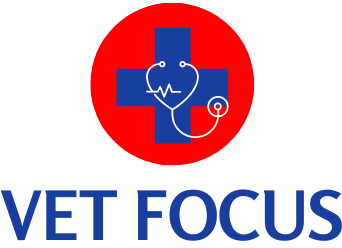Veterinary anesthesia and sedation are essential components of modern veterinary medicine, ensuring the safety and comfort of animals during surgical procedures, diagnostic imaging, and various medical interventions. These practices are governed by a range of techniques and considerations aimed at tailoring anesthesia to the specific needs of each patient.
Anesthetic Agents:
One of the fundamental aspects of veterinary anesthesia is the utilization of various anesthetic agents. These substances can be broadly categorized into two main types: inhalation anesthetics and injectable anesthetics. Inhalation anesthetics, such as isoflurane and sevoflurane, are administered through specialized anesthesia machines. These gases allow for precise control over the depth of anesthesia. On the other hand, injectable anesthetics like propofol, ketamine, and barbiturates are employed for both the induction and maintenance of anesthesia. The choice of anesthetic agent is carefully made by the veterinarian based on factors such as the animal's species, age, overall health, and the nature of the procedure.

Types of Anesthesia:
Veterinary anesthesia can take several forms, depending on the requirements of the procedure and the patient's condition. General anesthesia induces unconsciousness and loss of sensation throughout the entire body, making it suitable for complex surgeries. Local anesthesia, conversely, targets a specific area, effectively blocking sensation in that localized region. Regional anesthesia falls in between, numbing larger portions of the body, such as limbs or specific body regions. The choice between these types of anesthesia is determined by the nature and extent of the procedure, with the aim of providing the most effective and comfortable experience for the animal.

Sedation:
Sedation is a valuable tool in veterinary practice for calming and immobilizing animals during procedures that do not necessitate full anesthesia. Common sedatives, including drugs like acepromazine, dexmedetomidine, and midazolam, help alleviate anxiety and facilitate the handling of patients during routine examinations, minor surgical procedures, or diagnostic imaging.
Anesthesia in Exotic Animals:
Special Considerations: Exotic animals, including birds, reptiles, and small mammals, have unique physiological and anatomical differences that require specialized anesthesia protocols.
Anesthesia Monitoring:
Ensuring the safety of the patient during anesthesia necessitates continuous monitoring of vital signs. Veterinarians closely observe parameters such as heart rate, respiratory rate, blood pressure, and oxygen saturation throughout the anesthesia process. The use of capnography, which measures end-tidal carbon dioxide levels, is particularly crucial in assessing a patient's ventilation and respiratory function. These monitoring techniques enable prompt detection of any deviations from normal values, allowing for rapid intervention if complications arise.

Anesthesia Recovery:
Veterinary anesthesia recovery refers to the period immediately following the administration of anesthesia to an animal during a medical procedure. It encompasses the processes and measures taken to ensure the safe and comfortable transition of the animal from an anesthetized state back to consciousness and full awareness.
Anesthetic Risks and Complications:
While anesthesia is generally safe when administered by skilled professionals, it is not without risks. Before administering anesthesia, veterinarians conduct thorough assessments of an animal's health, considering pre-existing conditions and potential complications. Complications may include respiratory issues, cardiovascular problems, or adverse drug reactions. These risks underscore the importance of selecting the most appropriate anesthetic agents and techniques while maintaining vigilant monitoring throughout the procedure to promptly address any issues that may arise.
In essence, veterinary anesthesia and sedation are intricate and meticulously managed aspects of veterinary care. They require a delicate balance between ensuring the animal's comfort and safety during medical interventions, whether routine or complex, and the continuous advancement of techniques and protocols to provide the highest standards of care. Veterinary professionals continuously strive to refine their skills and stay abreast of the latest developments in this critical field to uphold the welfare of their animal patients.

For additional recommendations and guidance about veterinary science as well as practice, Kindly visit our website thevetfocus.com
Also explore Vet Focus's "Flashcards and Quiz Bundle", which includes Veterinary Pharmacology, Equine Health, and Diseases and Conditions. These bite-sized bursts of knowledge are designed to sharpen your learning in the field of veterinary medicine.


